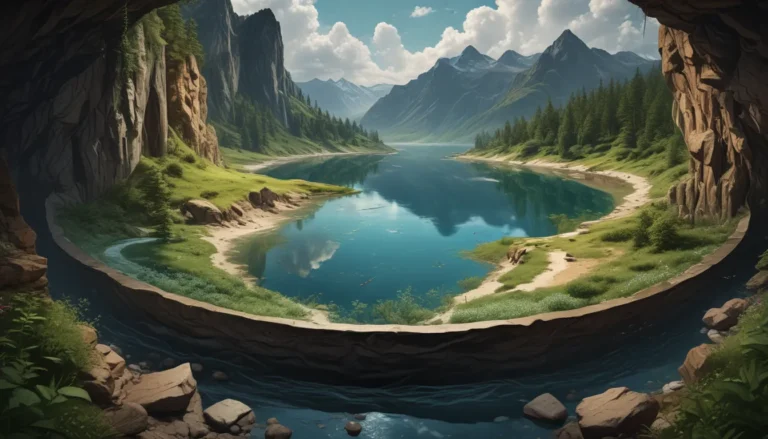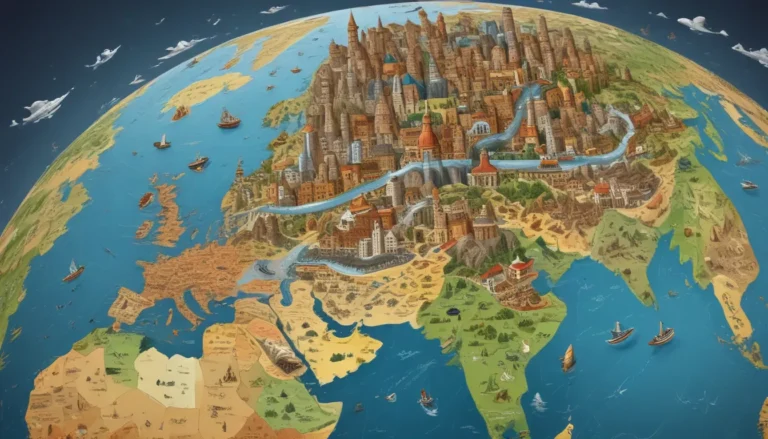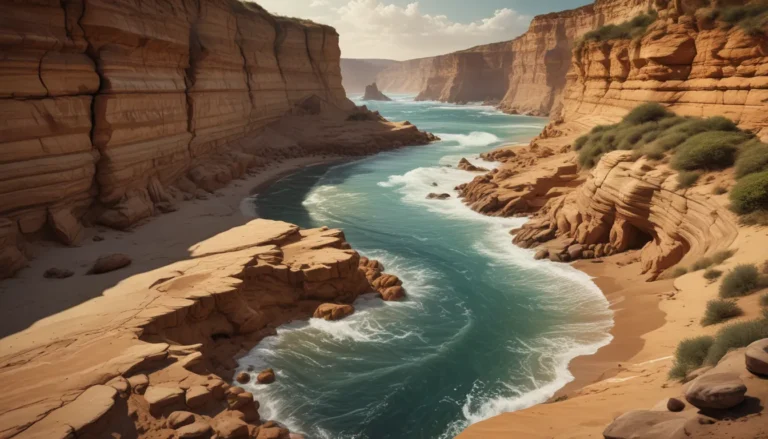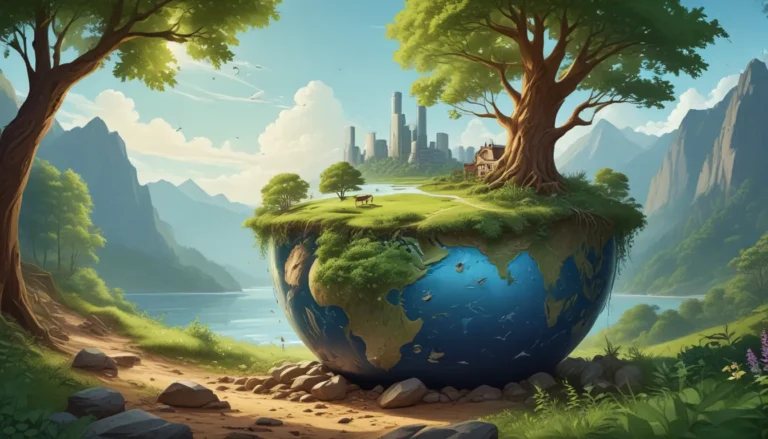A Note About Images: The images used in our articles are for illustration purposes only and may not exactly match the content. They are meant to engage readers, but the text should be relied upon for accurate information.
Palaeoclimatology, the captivating study of past climates, offers a window into the Earth’s ecological history through the analysis of natural sources of climate information. By delving into ice cores, tree rings, fossils, and sediment records, scientists can reconstruct ancient climate patterns, providing valuable insights into the planet’s climatic evolution over millions of years. In this informative journey through time, we will uncover intriguing facts about palaeoclimatology that will leave you amazed by the Earth’s climatic past.
Understanding Palaeoclimatology: A Glimpse into the Past
Palaeoclimatology is a scientific field dedicated to the study of past climates and their changes over extended periods. Scientists utilize various proxies, including ice cores, tree rings, and sediment records, to piece together the intricate puzzle of ancient climates. Through these methods, researchers gain a deeper understanding of the Earth’s historical climate conditions, such as temperature fluctuations, rainfall patterns, and extreme weather events.
Ice Cores: A Treasure Trove of Climate Data
Ice cores extracted from glaciers and polar ice caps serve as valuable archives of past climate information. By analyzing air bubbles and isotopic composition within the ice, scientists can unravel atmospheric conditions and greenhouse gas levels dating back thousands of years. These insights are instrumental in understanding historical climate variations and trends.
Tree Rings: Nature’s Climate Archives
Dendroclimatology, the study of tree growth patterns, provides important clues about past climates. By examining the width and density of tree rings, scientists can infer temperature and precipitation patterns for specific regions and time periods. Tree rings serve as natural archives that offer valuable information about historical climate conditions.
Oceans: Guardians of Climate History
Oceans act as significant regulators of global climate, influencing temperature patterns and ocean currents. By studying marine sediments, researchers can reconstruct past ocean temperatures and track changes over time. This knowledge contributes to a comprehensive understanding of long-term climate variability and its impacts.
Fossils: Insights into Ancient Environments
The fossils of ancient plants and animals offer tangible evidence of past climates. Through the examination of fossilized flora and fauna, palaeoclimatologists can deduce environmental conditions prevalent during different geological periods. Fossils provide a glimpse into the ecosystems that existed in the ancient past.
Connecting Past and Present: Lessons from Palaeoclimatology
Palaeoclimatology plays a crucial role in distinguishing between natural climate variability and human-induced climate change. By studying past climate variations, scientists can better predict future climate patterns and develop effective strategies to mitigate the impacts of climate change. This knowledge is essential for understanding the complexities of Earth’s climate system.
Climate Modeling: Bridging Past and Future
Data from palaeoclimatology studies are fundamental in refining climate models used to simulate future climate scenarios. By validating models against historical climate records, scientists can enhance the accuracy of projections and anticipate potential impacts of climate change. This interdisciplinary approach aids in better understanding climate dynamics.
Human History and Climate: A Symbiotic Relationship
Palaeoclimatology helps illuminate the connection between climate events and human history. By linking historical climate changes to societal developments, migrations, and the rise and fall of civilizations, researchers provide valuable insights into how climatic shifts have influenced human societies throughout history. Understanding these interactions is crucial for addressing current and future challenges posed by climate change.
The Global Puzzle: Creating Climate Archives
Integrating palaeoclimatology records from various regions worldwide enables the creation of global climate archives. These archives offer a comprehensive view of past climate dynamics, allowing for cross-comparisons between different geographical locations. By piecing together global climate data, scientists enhance their understanding of Earth’s climatic evolution.
Lessons from the Past: Mega-Droughts and Extreme Events
Studying mega-droughts and extreme climate events from the ancient past provides valuable insights into the potential impacts of climate change on water resources and ecosystems. By examining historical evidence of climate extremes such as hurricanes, heatwaves, and floods, scientists can assess the likelihood and magnitude of future extreme weather events. This knowledge is essential for implementing effective water management and adaptation strategies.
Embracing the Anthropocene Era: Human Influence on Climate
Palaeoclimatology contributes to our understanding of the Anthropocene era, characterized by significant human impacts on the Earth’s climate system. By comparing recent climate changes with historical records, scientists can evaluate the extent of human influence on the environment. This perspective offers valuable insights into addressing contemporary climate challenges and promoting sustainability for future generations.
In conclusion, palaeoclimatology offers a fascinating glimpse into Earth’s climatic past, providing valuable insights into the planet’s evolutionary history. By unraveling historical climate data, scientists can better comprehend natural climate fluctuations and human-induced changes. From studying ancient ice cores to analyzing fossil records, palaeoclimatology enables us to explore the mysteries of past climates and forecast future climate patterns. By harnessing the knowledge gained from this field, we can make informed decisions to protect our environment and ensure a sustainable future for all.
FAQs:
-
What is palaeoclimatology?
Palaeoclimatology is the scientific study of Earth’s past climate conditions based on evidence from geological records such as ice cores, tree rings, sediment layers, and fossil remains. -
Why is palaeoclimatology important?
Palaeoclimatology helps us understand natural climate variability and human-induced climate change, aiding in predicting future climate patterns and developing effective strategies to mitigate climate impacts. -
How do scientists gather data for palaeoclimatology?
Scientists collect data for palaeoclimatology through various geological records, including ice cores, tree rings, sediment layers, and fossils, to reconstruct past climates. -
What can we learn from palaeoclimatology?
Palaeoclimatology provides valuable insights into long-term climate trends, natural climate variability, and the impacts of factors like greenhouse gases on Earth’s climate system, aiding in understanding past and future climate changes. -
How does palaeoclimatology contribute to climate change research?
Palaeoclimatology contributes to climate change research by providing historical climate data for comparison with current trends, helping scientists assess the extent of human impact on the climate system and develop strategies for mitigation.
Our commitment to delivering engaging and accurate content drives our exploration of diverse insights and information. Each fact shared is a contribution from real users like you, ensuring a wealth of authentic knowledge and credible information. Trust in our dedication to quality and authenticity as you journey through the wonders of palaeoclimatology and expand your understanding of Earth’s ancient climate history.






